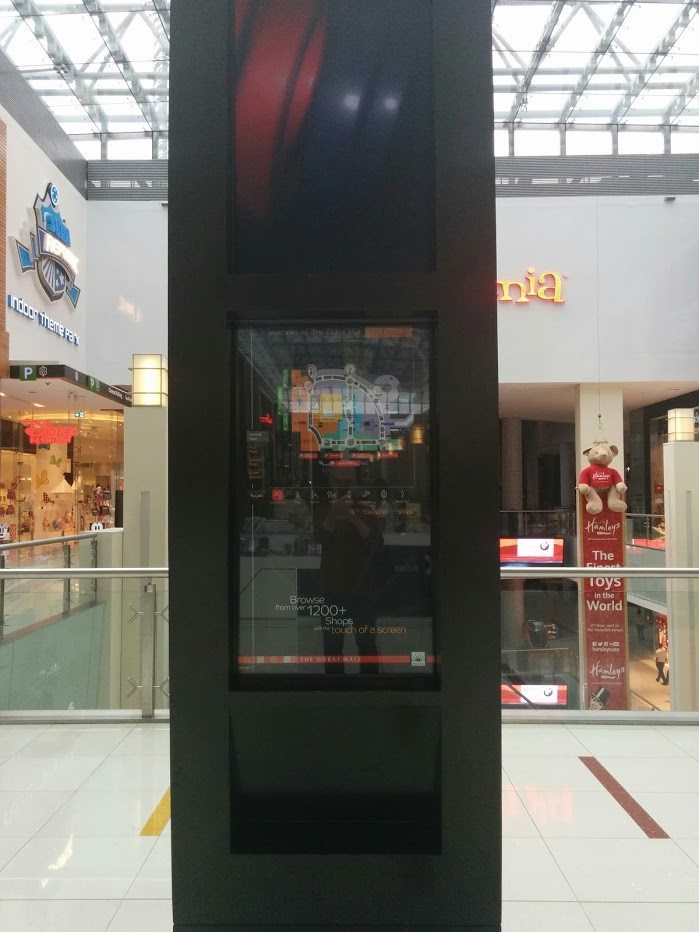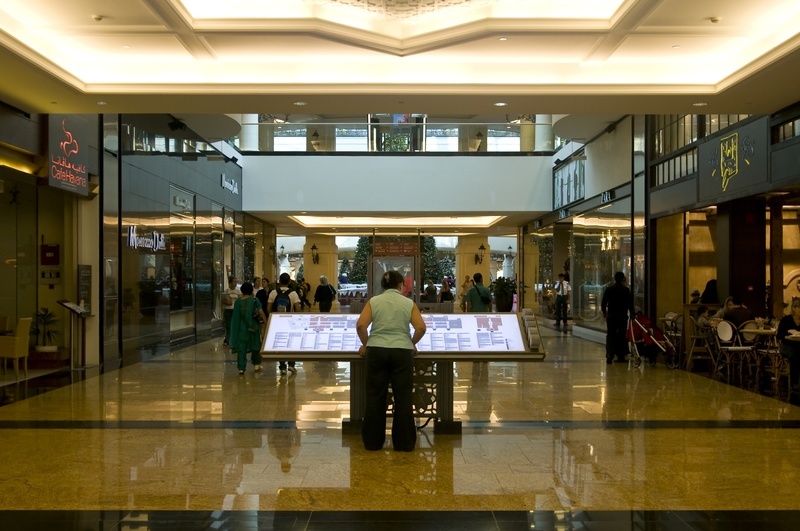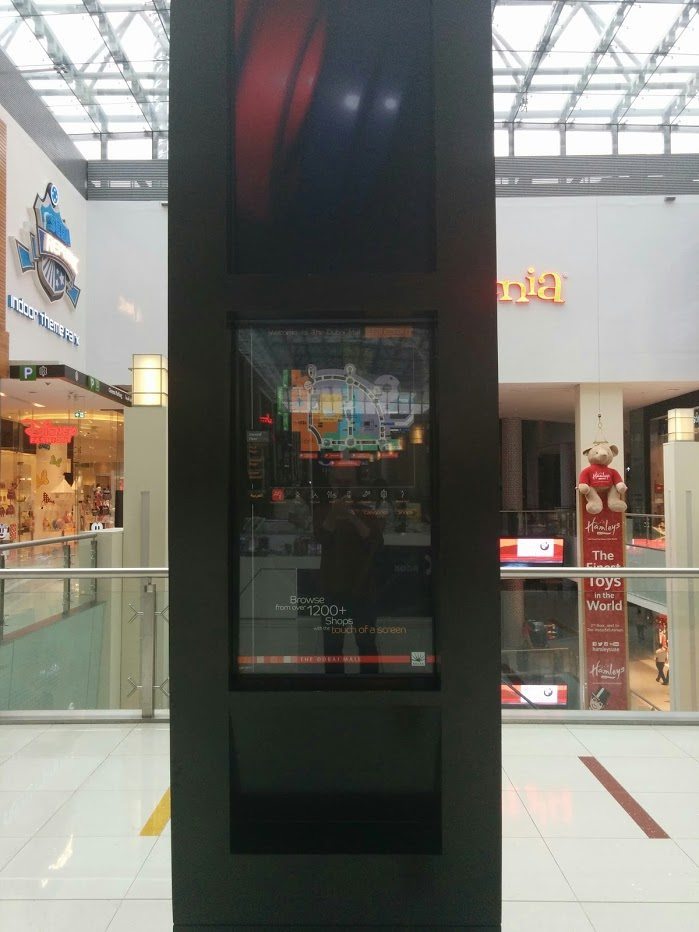
Are Shopping Mall Wayfinding Directories Still Relevant?
December 14, 2015 by Dave Haynes

I find myself in a lot of shopping malls during my travels, but not because I’m a voracious consumer. It’s rare when I even walk in stores. I’m there out of curiosity – looking at what the landlords and tenants are doing with the physical design and the digital experience.
A couple of weeks ago I found myself in two of the largest malls on the planet – a handful of metro stops from each other in Dubai. The Dubai Mall and Mall of the Emirates are utterly vast and somewhat bewildering – particularly Dubai Mall, which is thematically organized. All the banks, for example, were clustered together. There was another, dark area set up like a traditional souk.
I’m naturally good with directions, but found myself getting turned around and wondering where the heck I was. I don’t know how people who are hopeless at directions would find their way around.
 The conventional answer would be wayfinding directories. Posters or interactive screens that shoppers could walk up to and use to find out where they were, and where they were going.
The conventional answer would be wayfinding directories. Posters or interactive screens that shoppers could walk up to and use to find out where they were, and where they were going.
But the wayfinding in both these mega-malls was kinda terrible. In Dubai Mall (pic at right), the units were small, info-crammed and mostly didn’t work. In Mall of the Emirates (top), the directories were analog and crammed with information – the simple byproduct of a mall THAT big. At least it had English on one side, and Arabic on the other.
I was thinking, somebody needs to fix this. But then I was wondering, “Are directories even the answer?”
Probably not.
Smartphone penetration, mobile broadband and widely available WiFi mean most of us have navigation systems readily at hand, and there are numerous companies – from Google all the way down to startups – providing indoor mapping solutions. The location technologies vary from a new take on compasses to WiFi triangulation and proximity based on Bluetooth beacons.
What you end up with, through whatever technologies are brought to bear, is what gets referred to these days as blue dot navigation – a blue circle that shows where a shopper, and his or her phone, is located on a mall map. Integrated, usually, on a shopping mall (or mall group’s) app, the mapping provides turn by turn navigation to get you to a store or service in the mall.
Some of these systems are also doing things like allowing shoppers to plan journeys BEFORE they leave for the mall (including building lists and journeys), and they build in nice features like using GPS (which works outside) to pin and therefore locate where you parked. The beacons-driven systems can also do proximity marketing and push coupons and offers at shoppers, though there can be a fine line between welcome incentives and teeth-grinding, delete-the-app spam.
The other interesting thing is how these systems can also generate analytics – showing what people search for, conversions of searches to store visits, and how people move around a mall – with heat maps showing the busy stretches and dead zones.
Compare all that to how directories work now. Shoppers walk up and squint at a printed poster or digital directory. If digital, and the touchscreen is behaving, they can search. Ultimately, they end up with information telling them the store they are after is right behind them, or three lefts and a right away. Or was it two lefts, a right and a left. Or …
Point is, most of us can’t remember all the directions to get all the way to that destination, so we pick our way around, directory by directory.
Compare that to just having the map and walking instructions on your phone, updated steadily as you move.
Now, not everyone has a smartphone. But even seniors – a category I am starting to stray into (discounts, yay!, but generally, ugh) – are more tech savvy. I see lotsa gray hairs clutching iPhones.
As malls and other large footprint facilities refresh their designs and service delivery, I think you are going to see more of a focus on mobile apps delivering information, AND generating data for the mall operators. But I also think you’ll continue to see directories have a role. There’s an expectation that these directories exist, and they are a good starting point to make people aware that that phone-based tools and broadband are readily available.
It only took a couple of calls, to contacts that do digital navigation and analytics, to learn that both the mega malls are already well down the path of getting themselves sorted with technology refreshes. I know other mall groups are also doing the work to make their apps navigation tools.
Offering a big map and a list of stores is the baseline for malls, but it’s likely consumers these days are expecting a lot more.



Leave a comment